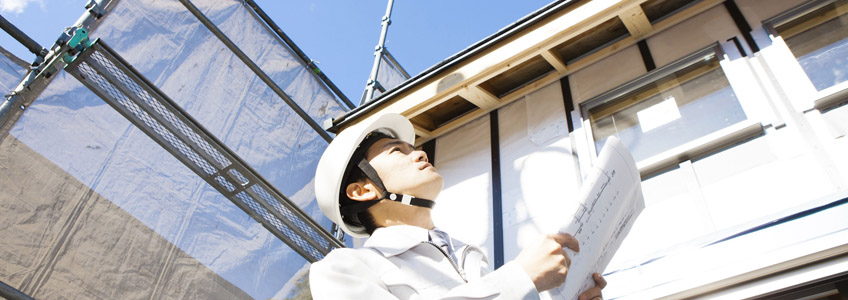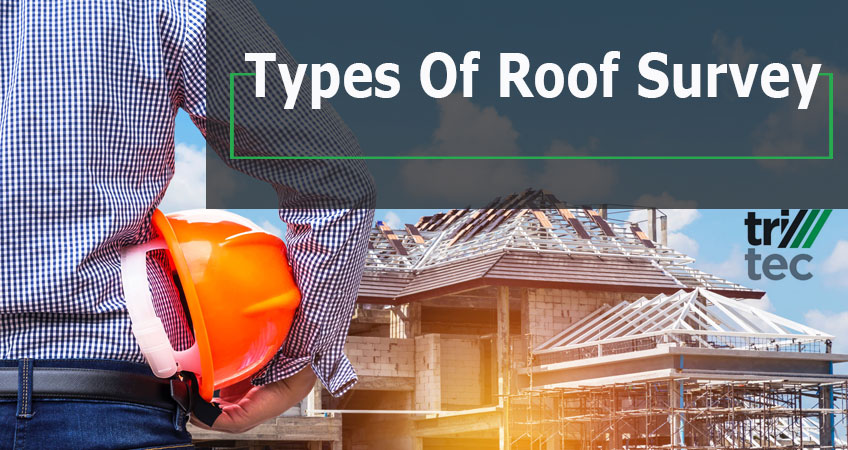Leakages and damages caused by weather conditions are avoidable. An accurate and thorough roof inspection pays as it will spot these damages quickly and save you a lot of money. Roof surveys are generally cheaper than a complete change of the roof when wind and water damage it. So, to get the most out of roof inspection, it is important that you are aware of the type of survey you need.
Below, we have prepared for you a comprehensive list of different types of roof surveys that will enable you to understand them better and decide which is right for you.
 Irrespective of the type of survey that is being carried out, there are a few roofing parts that need to be examined thoroughly. From examining these parts, professionals would be able to advise the homeowner on what to do. The roofing parts that should always be inspected include;
Irrespective of the type of survey that is being carried out, there are a few roofing parts that need to be examined thoroughly. From examining these parts, professionals would be able to advise the homeowner on what to do. The roofing parts that should always be inspected include;
When Do You Need A Roof Survey?
Roof inspections are conducted to determine the condition of the roof before the decision on whether to repair or change it is made. This inspection is essential, but when is it right to get one? The numbers show that 4 out of 5 customers who have experienced extreme weather conditions or have not checked their roofs in a while need one. If you are thinking of purchasing a new property, leasing one or insuring your building, then it is essential that you carry out a roof assessment. And just give a call to commercial roofing contractors near you.Types Of Roof Survey
1) Visual Roof Survey
You can predict what this roof inspection entails from its name. Visual roof survey involves the physical assessment and examination of a building’s roof by an inspector. The roof inspector will climb up the building and get a look at the termination details, coverings and rainwater gutters. However, this inspector doesn’t just examine the roof by merely looking at it. No! There is a lot of automated equipment available to give a detailed and precise condition of the roof. From what these professionals can gather from the readings of the equipment and what is visible, they can advise the homeowner on what action to take.2) Extended Camera Survey
Another way of determining the status of your roof is by an extended camera survey. This type of inspection can only be applied to buildings with average heights or dangerous roof paths. Extended camera surveys are also ideal when the roof coverings of a building are so fragile that they cannot be stepped on. An extended camera inspection involves a diagnostic assessment of a building’s roof using a mounted inspection camera. The roof surveyor determines the condition of the roof from what he can see through the camera.3) Drone Roof Survey
A modern and technological means of inspecting a building’s roof involves using a drone. This type of roof survey is used for buildings with extremely high roofs or paths that are very dangerous for humans to access. In this roof survey, you do not need a ladder. The drone can give a good view of the state of the roof. The advantage this type of roof survey has over all other types is that it can be used to inspect several buildings quickly. You will get quality footage using drones to examine a roof.4) MEWP Survey
MWEP is an acronym for Mobile Elevating Platform. This type of roof inspection is usually used in buildings that are dangerously high and unsafe for people to access using a scaffold or ladder. Hence, you do not need to traverse a building’s roof with this method physically. MWEP is one of the safest and fastest ways to examine the condition of a roof. A roof surveyor can gain access to a 100m-high roof using MEWP, and then create a report as they would in a visual roof survey.5) Core Sampling
Moisture roofing problems can be very challenging to handle. Luckily, core sampling is a roofing survey method that allows inspectors to access the extent of damage caused by moisture. The survey makes use of sophisticated cutting tools to extract samples of the roof. These samples are then examined using tech-tools and then sealed after the test is completed. This method of inspecting a roof enables us to determine the exact spot that is being damaged so that decisive action can be taken. Core sampling is an effective and invasive roof examination method.6) Electronic Leak Inspection
The most frustrating and difficult roof inspection problem to identify are leaks. Electronic Leak detecting equipment is used to determine and locate the places where water is leaking in a house. The roof inspector locates or identifies the leaking roof using charged bristles. Unlike flood testing, this type of roof survey is very safe. The leaking areas are then marked with survey paint, allowing for a quick repair or replacement plan to commence. Electronic leak inspection is a fast way to determine the leakage sites in a home.7) Thermal Roof Inspection
his type of survey allows you to identify areas of moisture and wet insulation in a building. When the roofing system is leaking, water may enter and saturate the underlying layers and insulation. These wet areas and outside air take a longer time to dry than other areas because they hold in more heat. The surveyor carries out this survey by visually inspecting the gutters, wall copings, metal edges, top membrane and flashings. A thermal roof inspection is usually scheduled in the evening around dusk. For infrared surveys, precise conditions must be achieved. The roof must be flat or have a low slope, and there should be little wind. Thermal roof inspections are best carried out during sunny and warm days and on clean and dry roofs.8) Moisture Probe
When water is being retained in your leaking roof, then moisture probes can be used for inspection. The extent and presence of moisture content on the roof are determined by inserting a small probe into a small area of the roof. This technique is used when a specific area is to be replaced or repaired, instead of taking action on the whole roof. The surveyor may be physically present on the roof or may examine it remotely.9) Moisture Scanning
Moisture scanning is another method of detecting moisture content in a roof. It is mostly used when your roof is on a building that is rarely heated, contains heat sources or comprises chippings. Using an infrared thermal inspection in any of these cases will not provide a precise or accurate result. Instead, a mobile scanner is used to analyse your roof’s moisture level and provide solutions to roofing problems.What To Expect From A Roof Examination
 Irrespective of the type of survey that is being carried out, there are a few roofing parts that need to be examined thoroughly. From examining these parts, professionals would be able to advise the homeowner on what to do. The roofing parts that should always be inspected include;
Irrespective of the type of survey that is being carried out, there are a few roofing parts that need to be examined thoroughly. From examining these parts, professionals would be able to advise the homeowner on what to do. The roofing parts that should always be inspected include;
-
Roofing Coverings
-
Drainage and Guttering
-
Internal Structure
-
Parapet Walls
-
Flashings
-
Fascias, Soffits And Barge Boards
Cost Of Roof Inspection In The UK
We are a company that offers roof survey services in the UK. The necessity and the cost of these assessments are the two major factors that discourage people from carrying it out. However, in the long run, doing roof examinations first would cost you far less than repairing or replacing a damaged part without examining the roof. Drone roof surveys cost the most because of the quality drones that are needed to give footage of the condition of the roof. Also, it costs more than other roof survey processes because of the technical skill required in operating it. The least expensive type of inspection is a visual roof survey. Final Words So, these are the types of roof surveys used in determining the status of a building’s roof and its parts. You can use two or more of these roof survey types on your building if there are situations specific to that type.

